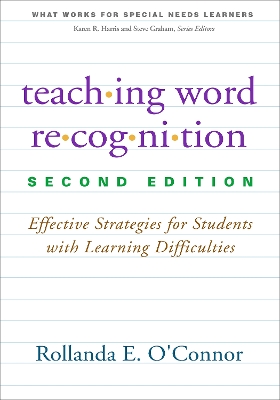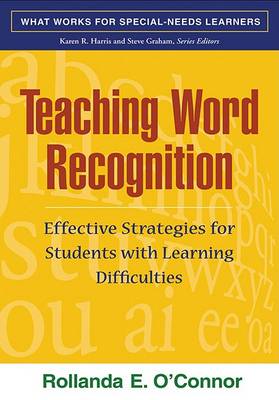What Works for Special-Needs Learners
2 total works
This highly regarded teacher resource synthesizes the research base on word recognition and translates it into step-by-step instructional strategies, with special attention to students who are struggling. Chapters follow the stages through which students progress as they work toward skilled reading of words. Presented are practical, evidence-based techniques and activities that target letter- sound pairings, decoding and blending, sight words, multisyllabic words, and fluency. Ideal for use in primary-grade classrooms, the book also offers specific guidance for working with older children who are having difficulties. Reproducible assessment tools and word lists can be downloaded and printed in a convenient 8 1/2 x 11 size.
New to This Edition
*Incorporates the latest research on word recognition and its connections to vocabulary, reading fluency, and comprehension.
*Chapter on morphological (meaning-based) instruction.
*Chapter on English language learners.
*Instructive Try This activities at the end of each chapter for teacher study groups and professional development.
Most struggling readers, including those with reading disabilities, have difficulties recognizing printed words. This unique, lucidly written book synthesizes the research on how children learn to read words skillfully and translates it into step-by-step strategies for the classroom. The author demonstrates how to plan and implement a coordinated series of lessons that address letter-sound pairings, decoding and blending, multisyllabic words, sight words, and fluency. The proven techniques presented are applicable across the primary grades; in addition, specific guidance is offered for working with older children who are having difficulties. A highly accessible guide, the book features reproducible assessment and instructional tools.

